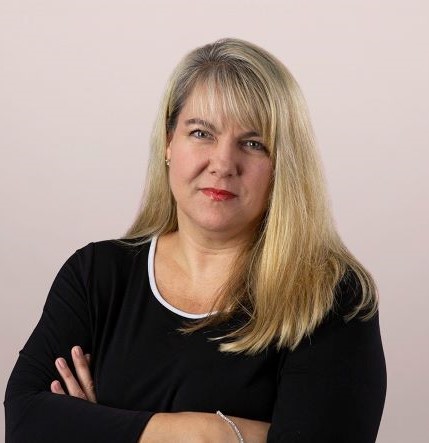Topics
Increasingly Valued, Partner Ecosystems Still Need Careful Planning, Ardent Evangelists
Forrester is advising B2B leaders to prudently explore opportunities that partner ecosystem programs may represent. In its Routes-To-Market Survey 2022, Forrester reported that 67% of B2B channel and partner ecosystem leaders said that orchestration of partner ecosystems is either very important or absolutely essential to their organization.

But before making significant changes or investments to existing infrastructure for ecosystem orchestration, business leaders must identify requirements, establish processes, evaluate available offerings, and conduct supervised pilots to prepare for future ecosystem-wide process introductions and new technology adoption.
And despite the increasing interest that C-suite leaders and other department bosses have in partner ecosystem programs, the people tasked with running them need to remain ardent evangelists, said Kathy Contreras, Vice President, Principal Analyst, Channel and Partner Ecosystem Marketing at Forrester. No matter how much a company is growing thanks to its partner ecosystem, driving appreciation among key stakeholders will require on-going evangelism by the program’s leader. “It’s always going to be a part of the role.”
Partner ecosystems are indeed getting the attention of senior management, said Contreras in a recent conversation with CMR. For example, a poll by Forrester found that more CMOs are starting to recognize and prioritize partner and channel processes as one of their top three areas of focus.

That makes a lot of sense considering the shift in how B2B customers are purchasing goods and services, she added. Offering a sneak peek into the results of a recent survey of 10,000 B2B buyers, Contreras said “Buyers are reporting that 69% of their purchases are from a third party, not direct from the business.” Equally important, this figure does not reflect how much partner ecosystems might influence direct purchases.
Nonetheless, B2B buyer preference to source goods and services from third-party organizations isn’t making it much easier for companies to craft successful programs to engage shoppers and decision-makers. To avoid costly and time-consuming missteps to market, Forrester stresses that companies should identify requirements, establish processes, evaluate available offerings, and conduct supervised pilots to prepare for future ecosystem-wide process introductions and new technology adoption.
“Find the processes first,” said Contreras. Channel leaders often fight hard for budget to support programs and make quick investments in their channel stack. Instead, she asserted that partner professionals must “make sure they understand what they’re trying to solve, what are they trying to automate, and then pilot it first.”
As companies expand their ecosystems with a variety of partner types, they need to ensure that their channel stacks can effectively support their needs. A platform that’s working well for transacting partners may not have the tools required by non-transacting partners. “Have you defined the alignment to buyers and customers? Who’s going to do what and what do you need to automate to drive success?”
For example, the goal in good marketing isn’t to touch all partners and customers at the same point, she said. “How are you orchestrating that is a new area of focus that organizations need to consider.”
Spreading The Word
A significant task for partner ecosystem managers will be driving cross-organization engagement and enthusiasm for the program, said Contreras. Even at businesses that rely heavily on partner-sourced revenue, building support for the program is an on-going task. Partner ecosystem leaders “need to continue internally evangelize what partnerships mean to the business, what value they offer and the impact of that to the organization.”
Other studies confirm that one of the biggest barriers to successfully orchestrating a partner ecosystem program is lack of support, especially in the C-suite. According to a recent report, The State of Partner Ops and Programs 2022, the primary challenges that partner ops programs face at companies are a lack of internal expertise on partner operations, even at a senior level. Poor internal alignment further complicates moving data in and out of multiple departments’ systems, including marketing, sales, and customer success. Executive buy-in was the third most cited blocker, resulting in insufficient allocation of budget and headcount to support programs.
Contreras attributed the inattentiveness of senior management to channel programs to a misunderstanding of their complexity. Many leaders assume that channel teams are focused solely on driving demand through partners, rather than building and managing complex infrastructures that result in a value proposition of that partnership to customers. “That’s where there needs to do more evangelism internally, to help them understand the nuances of what’s necessary to make a healthy and vibrant channel.”
Messages need to reflect the concerns of the specific internal audience, said Contreras. “You need to modify the evangelism to your audience. What do they care about, what matters to them? Can you show a value potential to those individuals based on their roles and their KPIs?”
But evangelists also need to ensure that teammates understand what to do next. It’s critical to include a call to action, said Contreras. “What can you do to help support this? What does your organization need to consider in order to perhaps take advantage of the multiplier effect of partnerships?” Contreras is optimistic that senior management and business unit leads are more open to messages about the value of engaging partner ecosystems. “The real change we’re seeing is companies starting to embrace all partnerships,” no longer looking at them as isolated routes to market, but relationships that add value to customers. At many companies, “you need to connect them in a way that you haven’t before.”









